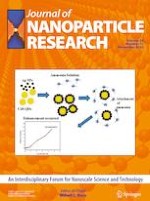01-11-2022 | Research paper
Synthesis and investigation of thermoelectric properties of Cu-doped bismuth sulfide (Bi2S3) nanostructures: an experimental approach
Published in: Journal of Nanoparticle Research | Issue 11/2022
Log inActivate our intelligent search to find suitable subject content or patents.
Select sections of text to find matching patents with Artificial Intelligence. powered by
Select sections of text to find additional relevant content using AI-assisted search. powered by
